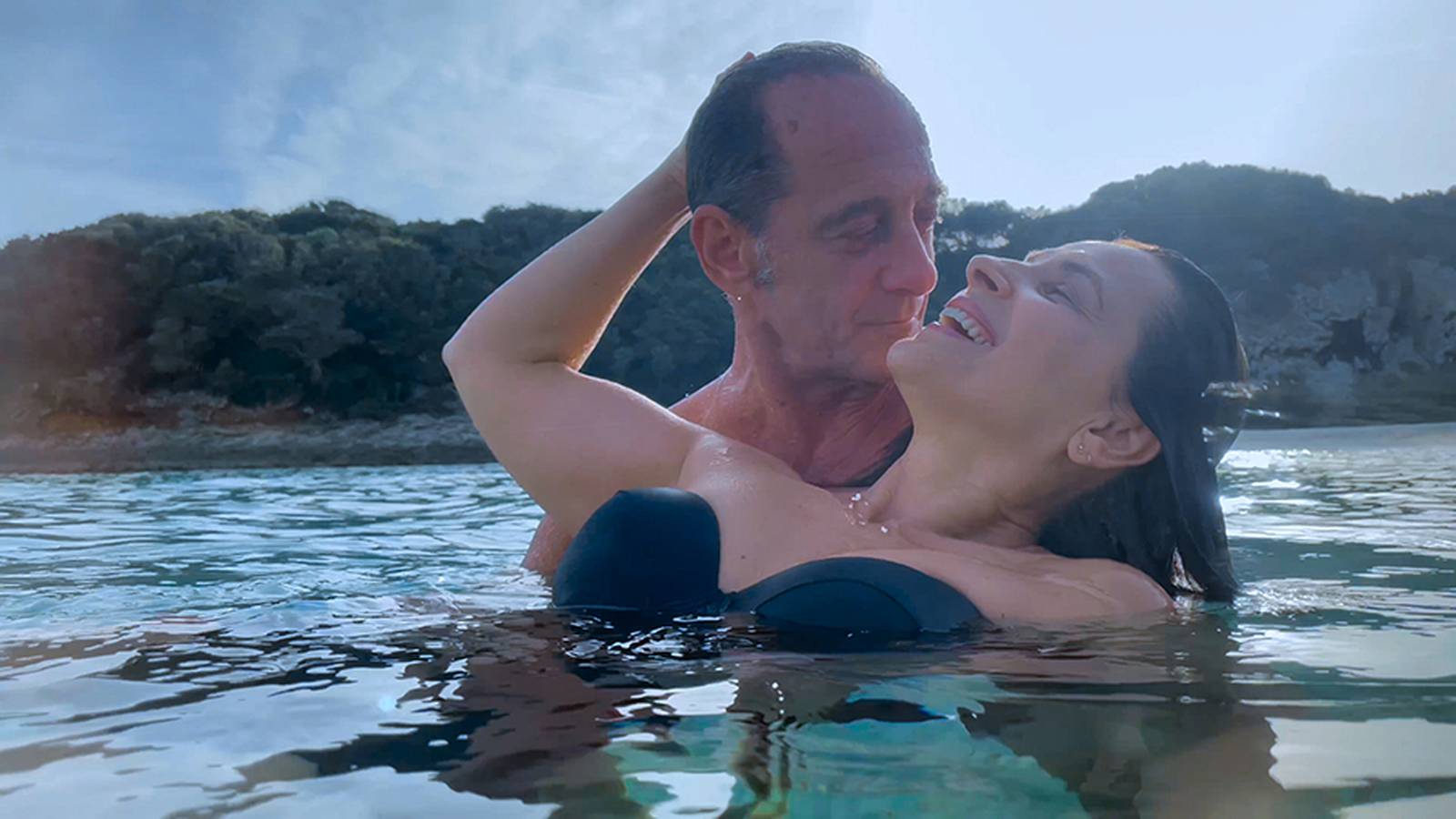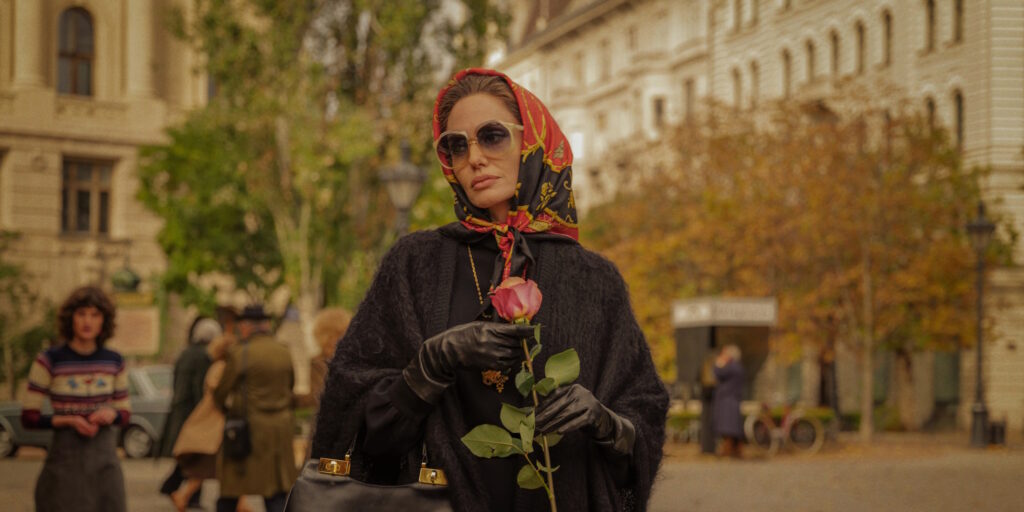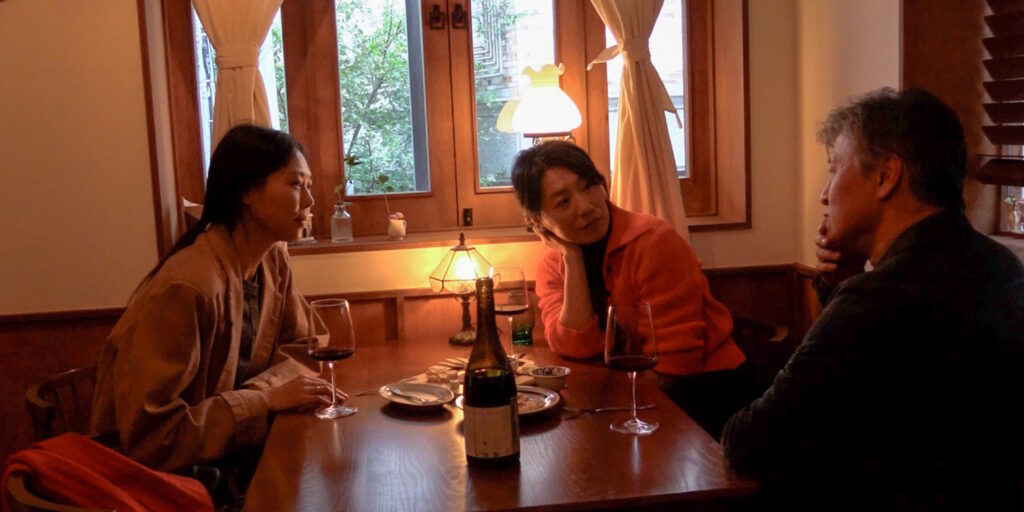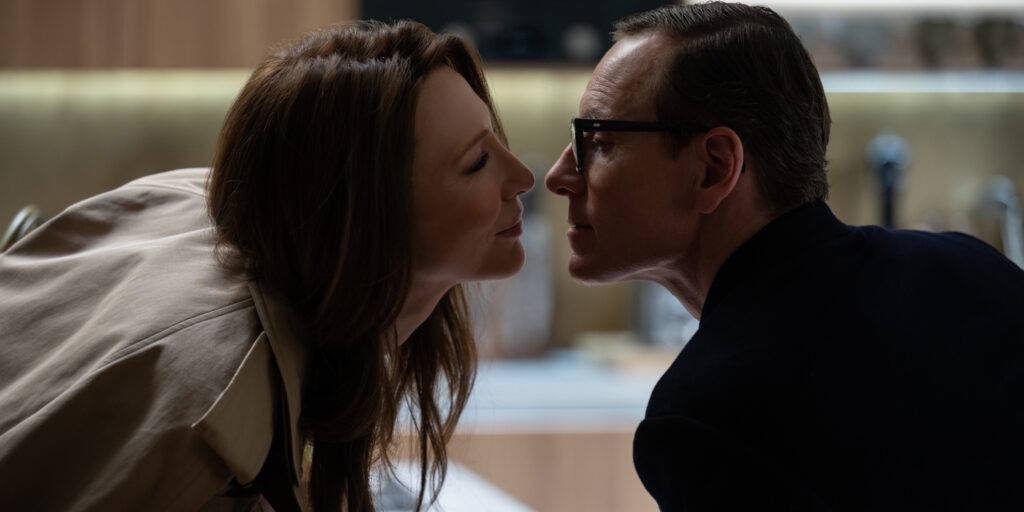[Originally published at Cinema St. Louis’ The Lens.]
Sara (Juliet Binoche) has just seen François (Grégoire Colin) for the first time in years. As she doubles back to verify that it was in fact him speeding away on his motorcycle, she rushes through the Covid-19 check outside the office where she hosts a daily talk show. He looked in her direction, but did he see her too? If he did, was he also flooded with memories of their past? Flush from only the sight of her former lover, she all but collapses against the wall of an elevator. She wraps her arms around her own midsection and repeats his name in refrain from under her facemask: “François, François, François, François…” The (perhaps intentionally) overwrought score by Tindersticks’ Stuart Staples underlines her anxiety and reignition of a dormant flame.
Director Claire Denis often deals in extremes: Trouble Every Day (2001) swims in pools of blood; High Life (2018) carries a device called the “Fuck Box;” and Bastards (2013) is a kind way to describe its characters. However, this early extreme emoting in Both Sides of the Blade signals the French filmmaker may be increasingly leaning away from bodily extremes and even further into the romantic ones of Friday Night (2002) and Let the Sunshine In (2018).
Her latest could be considered her first foray into downright melodrama. Like the best from the mode, it contains the same strain of social and political examination present in the DNA of films by the likes of Max Ophuls and Douglas Sirk and their progeny Rainer Werner Fassbinder and Todd Haynes. Their films often open like a flower in-bloom, growing as they reveal their delicate and often beautiful layers. Or maybe the better analogy is they’re like peeling an onion, since they often expose a tear-inducing odorous core.
Denis’ system is different from that of cinema’s great melodramatists, whose mise en scène are recognized for their formal rigor in design and execution. That rigidity is intended as a Brechtian distancing technique with elegance squeezing the ache out of their films and into their audiences’ emotions and intellect. Denis’s films are as systematic as Sirk’s or Fassbinder’s, but in contrast, her narrativization often favors “naturalistic” sensation over information, typically told via non-traditional structures.
To the uninitiated, it must feel chaotic. Both Sides of the Blade is largely a montage of close-ups tracking a network of emotional expression with a flurry of jagged-edged puzzle pieces. Their gradual, deliberate, and sometimes confusing coalescing is Denis’ brand of distancing. Here, the director and her co-scripter Christine Angot bury the lede: Many years ago, Sara left François for Jean (Vincent Lindon), her current husband, complicating a tangled web even further. Later they reveal that Sara was left without either when Jean went to prison, retroactively casting even more complication.
One question left pointedly unanswered is the exact reason for Jean’s imprisonment, but Lindon’s powderkeg performance gestures to a history of violence. Sara blocks Jean in a hallway during a heated confrontation late in the film. “Don’t make me move you,” Jean threatens. It’s as if he’s repressing his innate instincts to do just that with great force. The director is so attuned to her characters’ feelings and so adept at capturing her performers’ interpretation of them, the answers are often palpably felt before they’re understood.
At least at face-value, this is why Sara’s early display might feel more presentational than almost any in all of Denis’ oeuvre. However, by the time François properly completes an unstable love triangle with Sara and Jean, the reasons behind her mounting obsession with her old boyfriend extend into the existential and beyond what could be initially read as more artificial concerns. This complete clarity doesn’t come quickly here and possibly not until after the credits roll.
Sometimes Denis does go into explainer mode. At one point, Jean attempts to teach his brand of White left-leaning centrism to his estranged Black son Marcus (Issa Perica), and these words are less descriptive about his politics than how he simply behaves elsewhere. (It should be said that removing this scene would mean less Bulle Ogier, the French film legend who plays Jean’s mother, and no one wants that.) It’s a minor blunder, but when it happens in a Denis film, it’s like a veteran magician explaining a trick to the audience before they perform it.
The big trick here is this ostensible erotic thriller subtly unveils itself as a work about the Covid-19 pandemic. Shot while positive cases were dipping and vaccinations were becoming available, the Parisian streets are filled with masked faces, and characters are often doing routine application and removal of them. Again, Sara’s initial sighting of François is framed within a Covid check-point and unfolds with her masked up. This is a creative choice. The more obvious choice would have been to film the ever-brilliant Binoche’s face twist in anguish, but the impulse to resist this shows purpose. At a time when the spaces between people are widening, Both Sides of the Blade consistently examines feeling and how it’s communicated or obscured. Unprecedented change causes unprecedented pressure, and as in the best of Denis and melodrama, its characters exhibit the extremes to which people will test the limits of desire, duty, and free will.
Both Sides of the Blade will screen nightly at 7:30 p.m. from July 15 – 17 at the Webster University Film Series.




